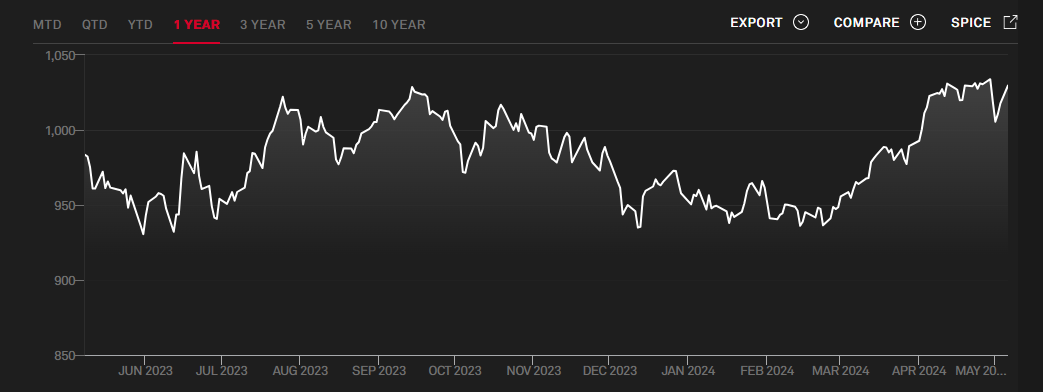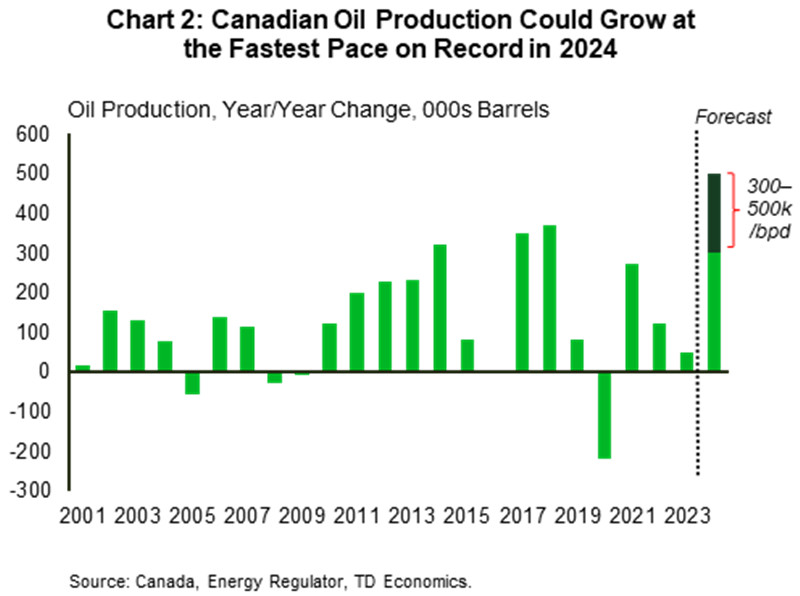A short-lived commodity boom on the heels of the pandemic was largely
unpredictable thanks to the fastest post-recession growth pace in decade, before
inflation fears put a brake on the rally.
But inflation that has peaked globally will likely remain high for years to
come - an environment where commodities usually perform well like base metals
and energy in particular.
That is already evident in a remarkable gain of roughly 6% of the Dow Jones
Commodity Index so far. Meanwhile, two major commodity currencies - the
Australian dollar and the Canadian dollar both fell around 3%.

An early kick off to easing cycles by most major central banks had been
crowded bets in Q1, but the SNB turns out to be the outlier with a surprising
interest rate cut in March.
A considerable debate has emerged among economists over whether, in the long
run, rates would return to pre-pandemic levels or settle higher. The last mile
of disinflation may be the most difficult one.
In April, the IMF inched up its expectations for global economic growth this
year while warning the outlook remains cautious amid persistent inflation and
geopolitical risks.
A long-lasting commodity bull run is far from certain given the agency's view
that medium-term outlook remains the weakest in decades. Still risk-sensitive
currencies might have scope for more gains.
War beneficiaries
Russia has started preparations for missile drills near Ukraine simulating
the use of tactical nuclear weapons in response to "threats" by Western
officials, Kremlin spokesman Dmitry Peskov said on Monday.
French president Macron repeated that he does not rule out sending troops to
Ukraine, while British Foreign Secretary Cameron said Kyiv's forces will be able
to use British long-range weapons in the war.
Investors have been plagued by possible escalation of ongoing wars in Europe
and the Middle East. Typically, this kind of tail event wreaks havoc on risky
assets, but there are some well-known exceptions.

Oil and gold are undoubtedly among the biggest beneficiaries of a war. Brent
crude climbed above $130 per barrel shortly after Moscow launched a full-scale
invasion of Ukraine two years ago.
Iron ore has proved to be another winner, averaging $135.54 for the 2021-22
financial year. Russia and Ukraine both mine iron ore and manufacture steel and
hence supply disruption jitters.
After a relatively weak year for Canada's oil producers, significant output
growth in 2024 could put the nation in the running to be the largest source of
global oil supply growth, according to TD Economics.

Elsewhere Australia happens be the world's second largest gold producer and
have the largest gold mine reserves worldwide. And it is also the top iron ore
producer and exporter.
Academic Heresy
The greenback's resurgence has come on the back of a slew of signs that the
US economy swerved the slowdown many anticipated. Another tailwind for the
dollar is its role as an unrivalled sanctuary.
The dollar smile theory suggests the dollar rises when the US economy is
either booming or in a deep slump. Some economists even argue rate hikes have
helped spur the recovery due to exploding US budget deficits.
They believe the jump in benchmark rates is providing Americans with a
significant stream of income from their bond investments and savings accounts
for the first time in two decades.
Therefore, the additional spending is more than enough to offset the drop in
demand from those who stop borrowing money, which made the rate-hiking cycle
simulative.
Mark Zandi, chief economist at Moody's Analytics, called the new theory
simply "off base". But he acknowledges that "higher rates are doing less
economic damage than in times past."
US Treasury Secretary Janet Yellen said it's "unlikely" that interest rates
will return to levels that prevailed before the Covid-19 pandemic triggered a
wave of inflation and higher yields.
The 10-year Treasury yield is now level with that of comparable AGBs and is
nearly 90 bps higher than its Canadian peer's. The rate differential could have
helped push the Aussie dollar higher than loonie.

A close game
The IMF lately raised its Asia growth forecast to 4.5% for 2024, reflecting
upgrades for China. It also remained optimistic on India where "public
investment remains an important driver."
The Asian Development Bank struck a similar tone, saying China will remain
the largest growth engine for the world economy in spite of its slowdown while
India's economy is undoubtedly a "bright spot."
The forecast put the Australian dollar in a good position to outperform the
Canadian dollar though China's property sector is posing a dire risk to Asia's demand.
Second-hand home sales in China surpassed those of new homes by floor space
last year for the first time since 1990s, presaging continued weakness in the
construction activity.

President Joe Biden has called for a tripling of tariffs on some steel from
China in April, but economists largely see the threat as more of a political
tool than an economic one.
High tariffs can have unintended economic consequences that end up penalising
American importers and consumers more than they do the intended Chinese
exporters.
In a nutshell, the Canadian dollar and the Australian dollar will likely
extend their rally against the US dollar from early May in the short-term with
slightly better prospects for the latter.
Disclaimer: This material is for general information purposes only and is not
intended as (and should not be considered to be) financial, investment or other
advice on which reliance should be placed. No opinion given in the material
constitutes a recommendation by EBC or the author that any particular
investment, security, transaction or investment strategy is suitable for any
specific person.











